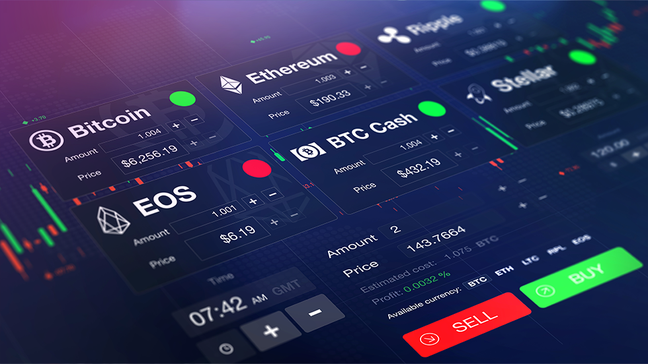
Understanding Crypto Trading High-Frequency
High-frequency trading (HFT) is a complex yet fascinating aspect of the cryptocurrency market. It involves the use of sophisticated algorithms and high-speed data networks to execute trades at a speed and frequency that is impossible for humans to match. As the crypto market continues to grow and evolve, understanding crypto trading high-frequency has become essential for traders looking to gain an edge in this highly competitive space. To dive deeper into the intricacies of this trading approach, you can explore more details at Crypto Trading High-Frequency http://recursosanimador.com/scripts/librovisitas2.php?pagina=8515.
The Fundamentals of High-Frequency Trading
High-frequency trading is characterized by high turnover rates and the execution of orders at extremely fast speeds. This trading style relies on algorithms that can analyze multiple markets and execute orders in seconds or even milliseconds. HFT can be applied to both traditional financial markets and the cryptocurrency market, where timing and execution can significantly influence profitability.
How Does High-Frequency Trading Work?
The core of high-frequency trading lies in its ability to take advantage of minute price discrepancies that may occur in the market. For instance, a high-frequency trader might identify a small price difference between two exchanges for the same cryptocurrency. By executing a large volume of trades within nanoseconds, they can profit from these small discrepancies before they disappear.
Key Components of HFT
- Algorithmic Trading: Algorithms are central to HFT operations. They analyze market data and make split-second decisions without human intervention.
- Co-location: To maximize speed, many HFT firms colocate their servers in close proximity to exchange servers. This reduces latency and speeds up execution times.
- High-Speed Data Feeds: Access to real-time data and analytics is crucial for HFT strategies. High-frequency traders invest in the best data feeds to stay ahead of the market.
The Advantages of Crypto High-Frequency Trading
While high-frequency trading can be risky, it also has several advantages:
- Increased Liquidity: HFT contributes to market liquidity, which can help stabilize prices and reduce volatility.
- Arbitrage Opportunities: Traders can capitalize on price discrepancies across different exchanges, resulting in potential profits.
- Minimized Risk: By executing a large number of trades with small profits, traders can minimize exposure to significant market movements.

Risks Associated with High-Frequency Trading
Despite its advantages, high-frequency trading also presents several risks that traders must navigate:
- Market Manipulation Concerns: HFT has faced scrutiny for practices that may distort markets, leading to regulatory challenges.
- Technological Failures: Relying on algorithms means that technical issues or glitches can lead to significant losses.
- Adverse Selection: High-frequency traders may inadvertently trade against better-informed investors.
Technologies Powering High-Frequency Trading
Several technologies play a vital role in facilitating high-speed trading:
- Machine Learning: Traders leverage machine learning algorithms to identify trading patterns and optimize strategies.
- Blockchain Technology: With the rise of cryptocurrencies, blockchain technology provides a secure and transparent environment for trading, ensuring effectiveness in HFT operations.
- Cloud Computing: Cloud technology allows traders to enhance their computational power and scalability, enabling real-time analyses without heavy investments in physical infrastructure.
Getting Started in Crypto High-Frequency Trading
For those looking to enter the realm of high-frequency crypto trading, here are steps to consider:
- Research Deeply: Understanding market dynamics, trading strategies, and technologies is crucial before diving in.
- Develop a Trading Strategy: Create algorithms that can autonomously analyze and predict market behaviors.
- Establish Robust Infrastructure: Consider the technology and hardware required for effective high-frequency trading.
- Backtest Your Strategies: Test your trading algorithms with historical datasets to evaluate their performance before going live.
- Stay Compliant: Ensure that you understand and comply with the regulations governing high-frequency trading in your jurisdiction.
Conclusion
Crypto trading high-frequency offers traders immense opportunities for profit but also comes with significant risks. Mastering HFT requires a solid understanding of the market, sophisticated technologies, and well-structured strategies. As the cryptocurrency markets continue to develop, the importance of high-frequency trading will only grow, making it essential for modern traders to stay informed and adaptable.